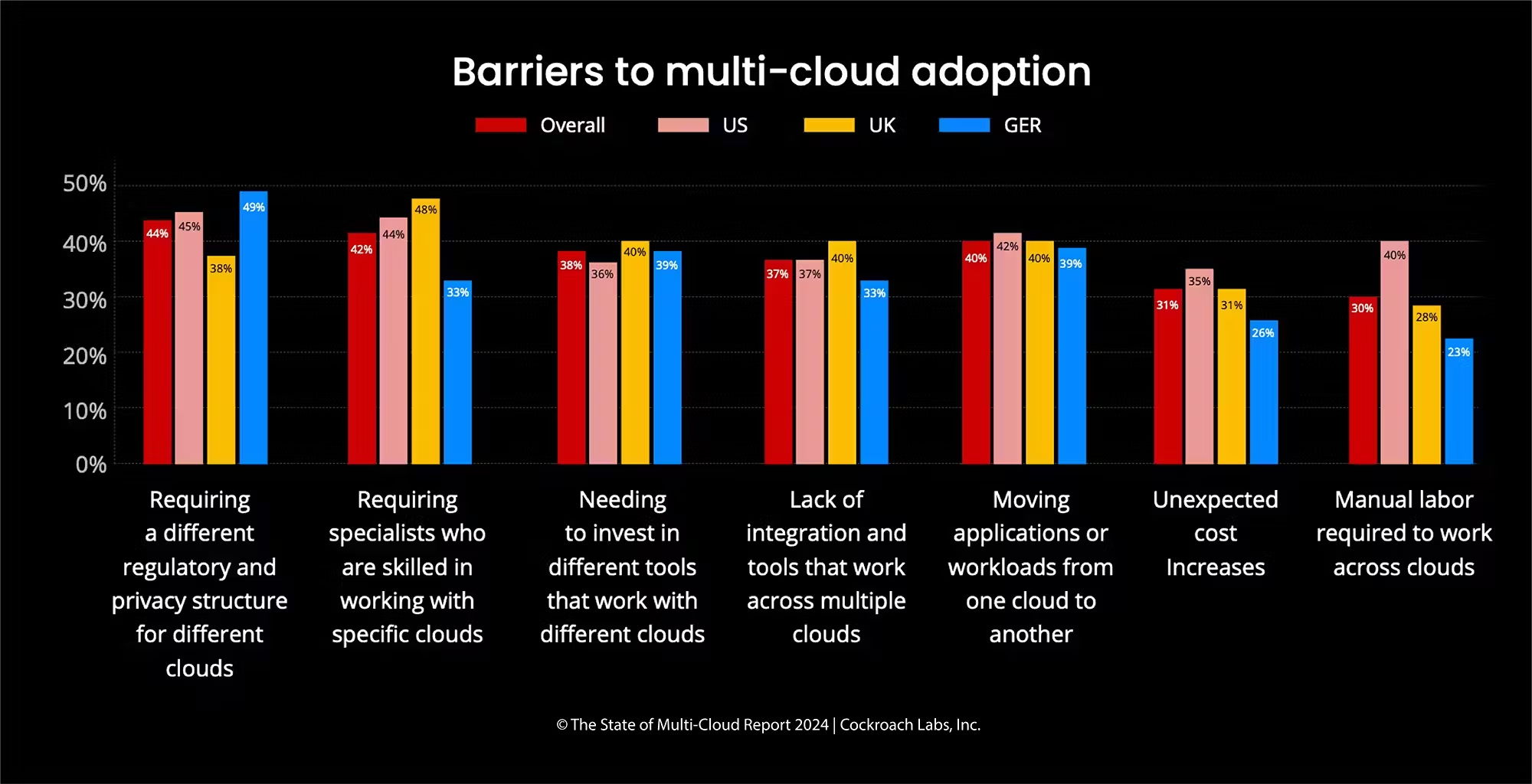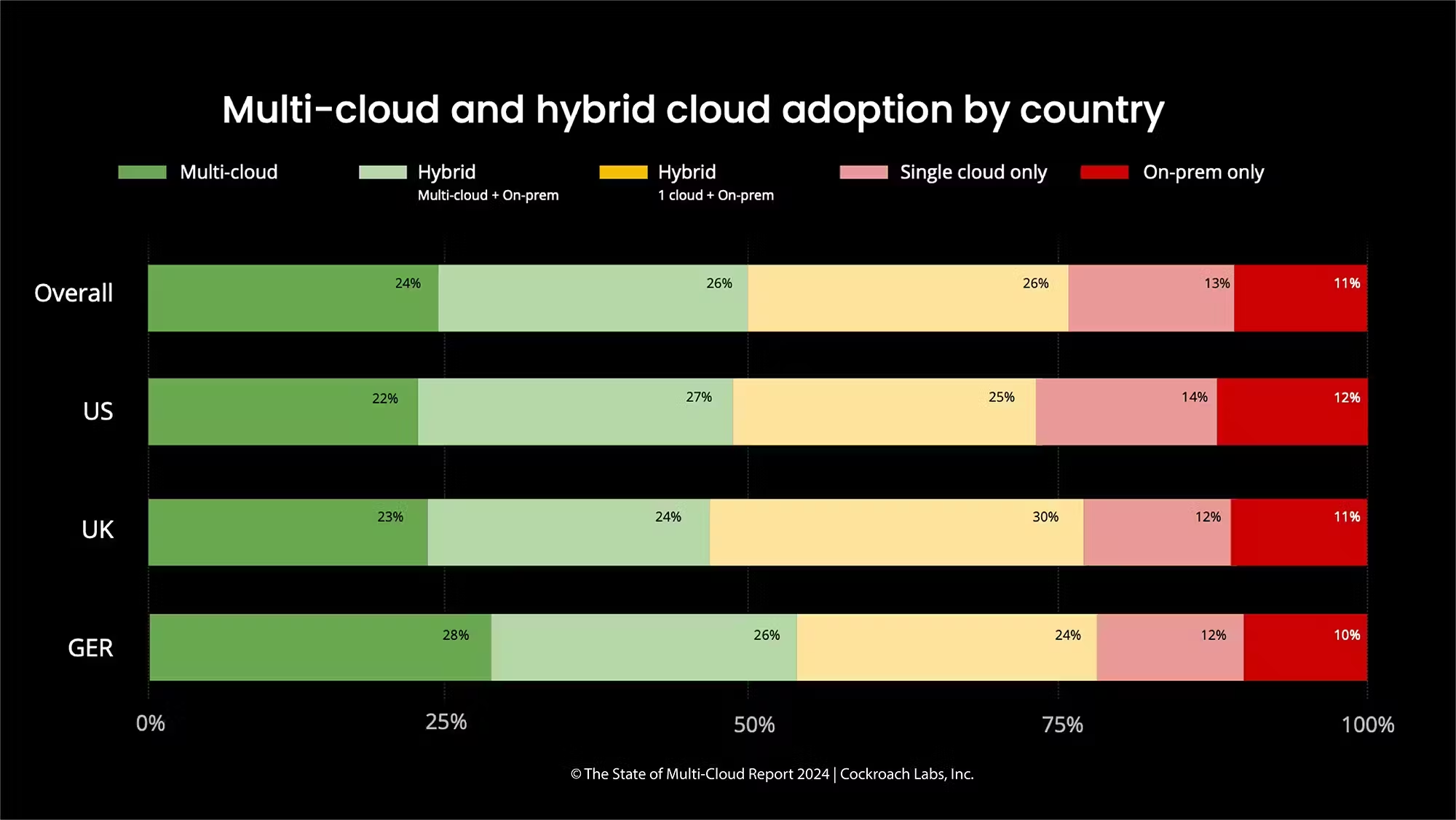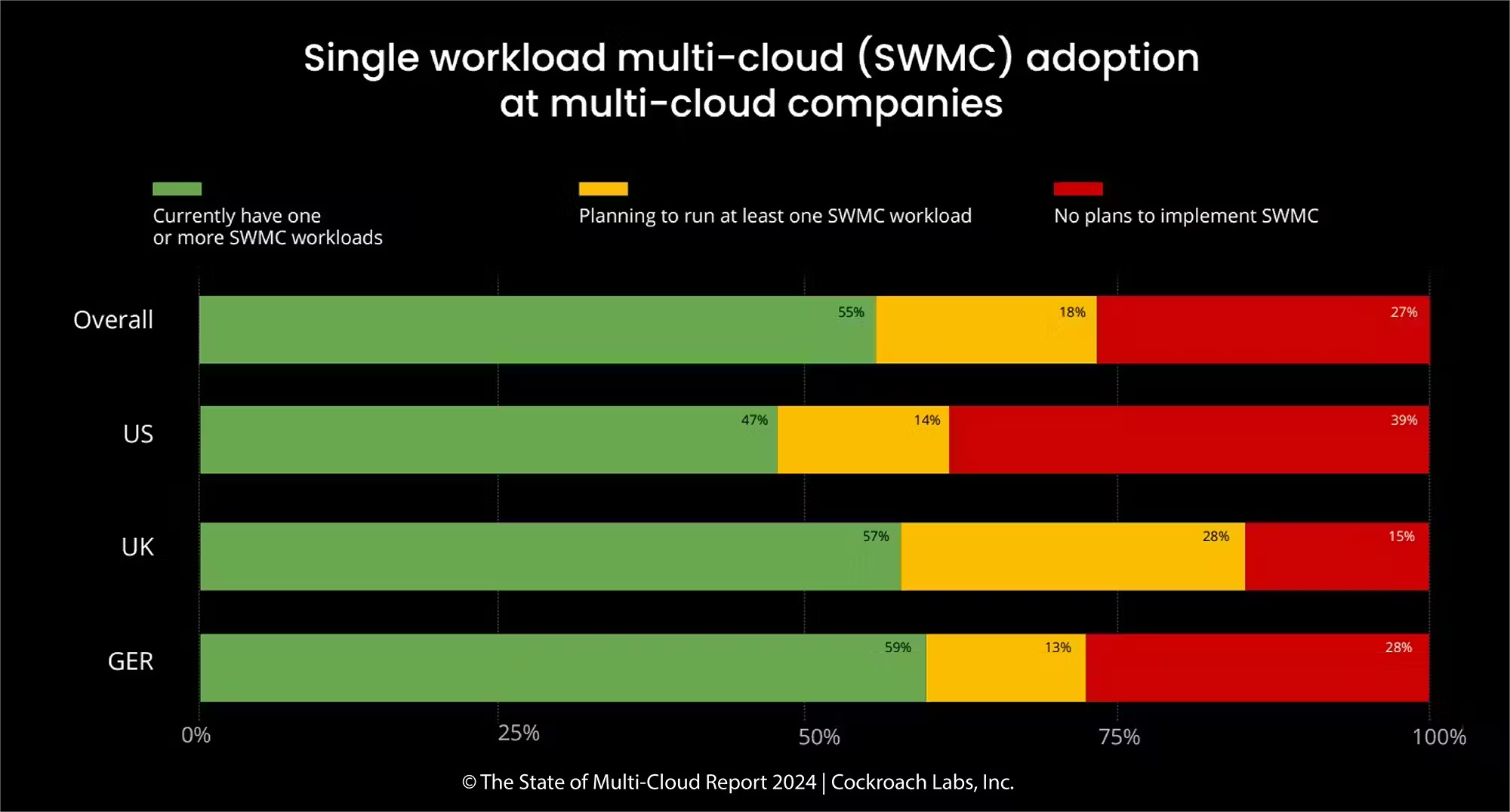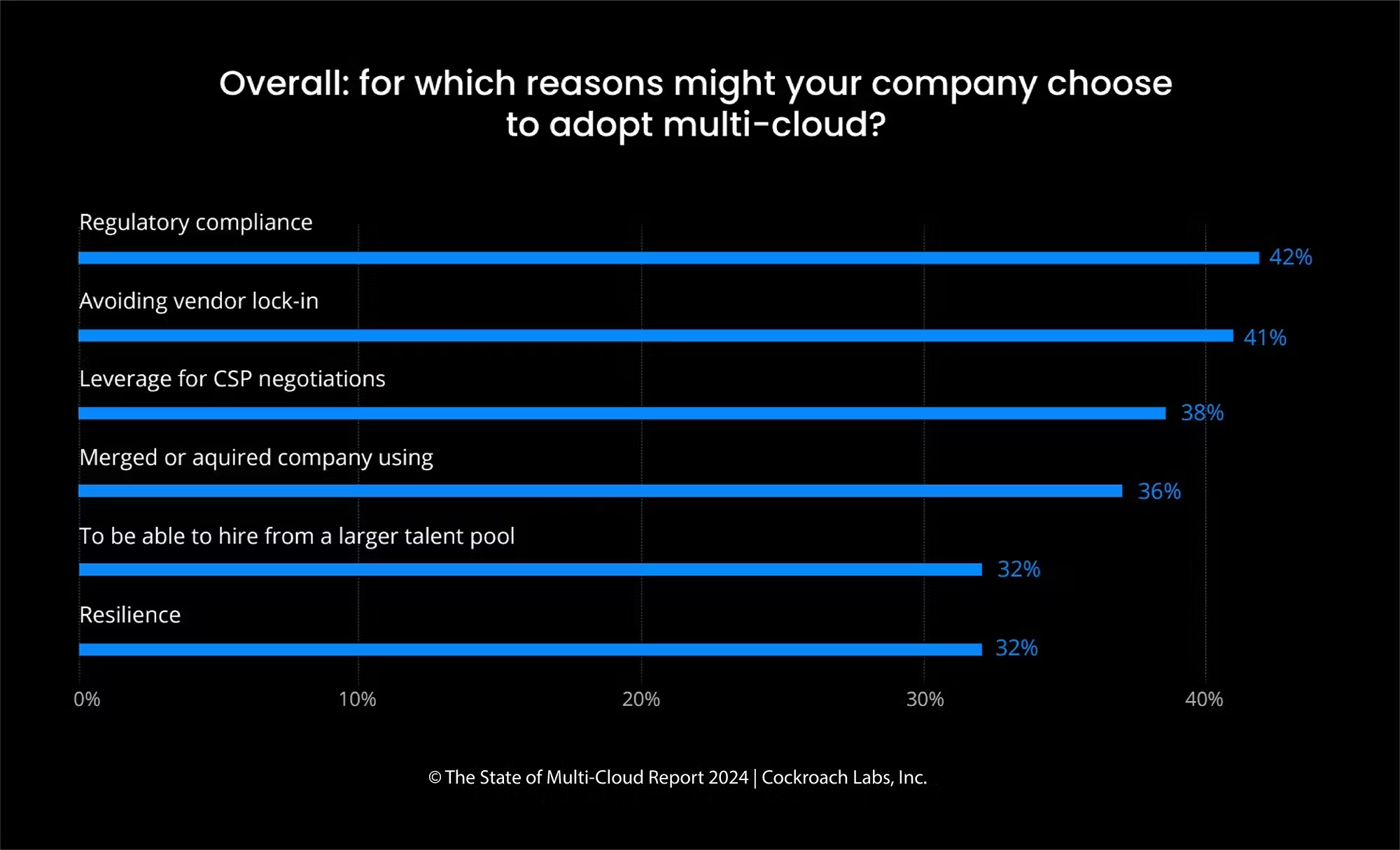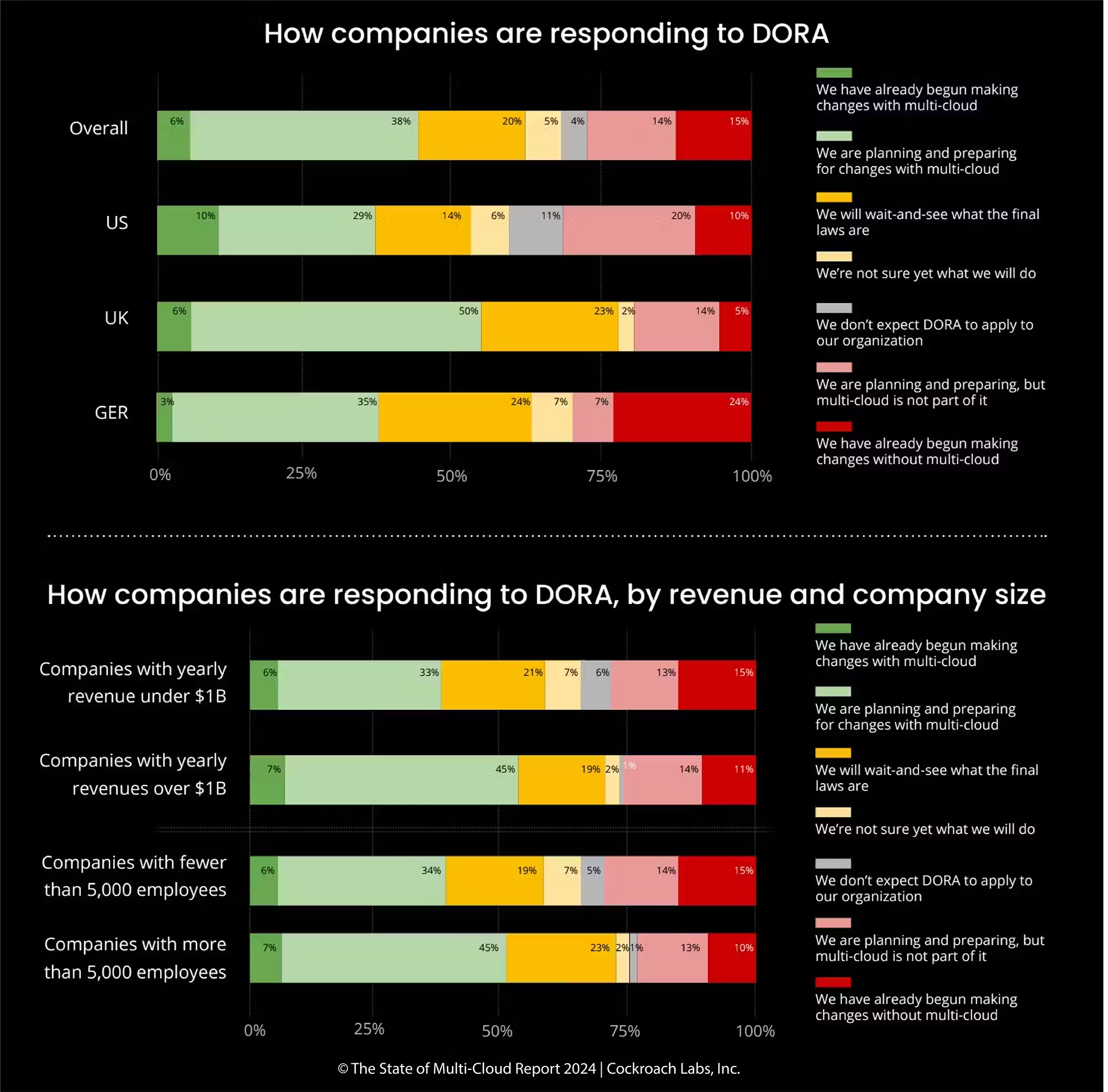“Multi-cloud is the future.” You’ve probably heard something like that before.
Does the multi-cloud hype match the reality on the ground?
The State of Multi-cloud 2024 report is our answer to that question, and quite a few others, including:
How are
economic and regulatory factors
likely to impact multi-cloud adoption?
Which companies
should consider multi-cloud and which should not?
What are the
best practices for building multi-cloud applications
?
To answer these questions, we surveyed 300 architects and engineering directors at companies in the US, the UK, and Germany to understand their company’s current multi-cloud situation and how they see the future. We also conducted in-depth interviews with expert engineers who are on the ground building multi-cloud applications to learn more about the pitfalls, “gotchas”, and best practices for building multi-cloud applications.
Check out our 2024 multi-cloud webinar with Erol Kavas, Cloud Architect and Director at PwC.
Here’s a sneak peak of just some of the things we learned:
Multi-cloud isn’t as easy as it sounds
Although most of the major public cloud providers are “squint-equivalent,” survey respondents and on-the-ground engineers say the devil is in the details. Small differences between the clouds can create major problems, and these differences lie at the heart of many of the major factors that stop companies from adopting multi-cloud.
But the challenges of multi-cloud – and there are many – don’t seem to be preventing companies from adopting it.
Note: Different people can mean different things when they say multi-cloud. Here’s how we define multi-cloud, intercloud, single-workload multi-cloud, and other related terms.
Multi-cloud isn’t as niche as we expected
Roughly half of all survey respondents told us their companies are already multi-cloud, and an additional 26% have hybrid cloud setups combining on-premises hardware with a single cloud provider.
Many companies are running at least one workload across multiple clouds
More than half of multi-cloud companies are also running at least one workload across multiple clouds. This complex form of multi-cloud deployment may still be in the early stages of adoption, though: most multi-cloud companies have at least one single-workload multi-cloud deployment, but very few have more than one.
So why is multi-cloud so widespread, and why are a surprising number of companies even looking into more complex multi-cloud deployments like single-workload multi-cloud?
Business reasons, not technical reasons, tend to drive multi-cloud adoption
Multi-cloud deployments are more technically challenging than single-cloud deployments, and adoption tends to be driven by business goals needs, such as the need to comply with operational resilience regulations like DORA or the desire to maintain cloud portability and avoid being locked in with a single cloud service provider.
This trend doesn’t look likely to change in the near future:
Economic uncertainty and regulations like DORA look set to drive more multi-cloud adoption
Most survey respondents who said their companies are preparing for the EU’s Digital Operational Resilience Act (DORA) reported that multi-cloud is a part of those preparations. Most respondents also said that they expected the current economic uncertainty and budget-tightening to accelerate multi-cloud adoption.
Dig deeper into multi-cloud pain points and best practices
There’s more – much more – where that came from!
Get your free copy of the report today to learn more about where multi-cloud adoption is today, where IT decision makers see it heading, and the pitfalls and best practices highlighted by engineers who’ve built successful multi-cloud applications.


